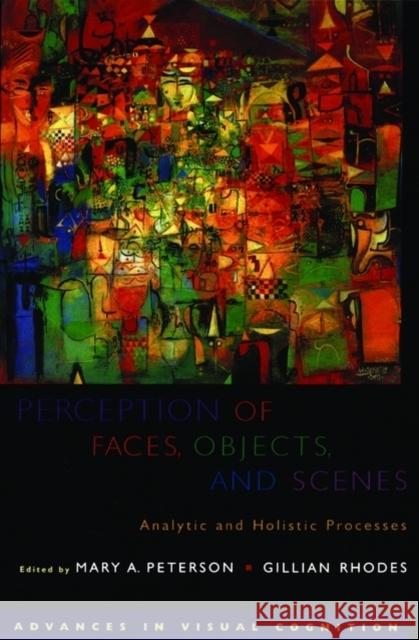Perception of Faces, Objects, and Scenes: Analytic and Holistic Processes » książka
Perception of Faces, Objects, and Scenes: Analytic and Holistic Processes
ISBN-13: 9780195313659 / Angielski / Miękka / 2006 / 406 str.
Perception of Faces, Objects, and Scenes: Analytic and Holistic Processes
ISBN-13: 9780195313659 / Angielski / Miękka / 2006 / 406 str.
(netto: 259,69 VAT: 5%)
Najniższa cena z 30 dni: 264,62
ok. 30 dni roboczych
Bez gwarancji dostawy przed świętami
Darmowa dostawa!
From a barrage of photons, we readily and effortlessly recognize the faces of our friends, and the familiar objects and scenes around us. However, these tasks cannot be simple for our visual systems--faces are all extremely similar as visual patterns, and objects look quite different when viewed from different viewpoints. How do our visual systems solve these problems? The contributors to this volume seek to answer this question by exploring how analytic and holistic processes contribute to our perception of faces, objects, and scenes. The role of parts and wholes in perception has been studied for a century, beginning with the debate between Structuralists, who championed the role of elements, and Gestalt psychologists, who argued that the whole was different from the sum of its parts. This is the first volume to focus on the current state of the debate on parts versus wholes as it exists in the field of visual perception by bringing together the views of the leading researchers. Too frequently, researchers work in only one domain, so they are unaware of the ways in which holistic and analytic processing are defined in different areas. The contributors to this volume ask what analytic and holistic processes are like; whether they contribute differently to the perception of faces, objects, and scenes; whether different cognitive and neural mechanisms code holistic and analytic information; whether a single, universal system can be sufficient for visual-information processing, and whether our subjective experience of holistic perception might be nothing more than a compelling illusion. The result is a snapshot of the current thinking on how the processing of wholes and parts contributes to our remarkable ability to recognize faces, objects, and scenes, and an illustration of the diverse conceptions of analytic and holistic processing that currently coexist, and the variety of approaches that have been brought to bear on the issues.











